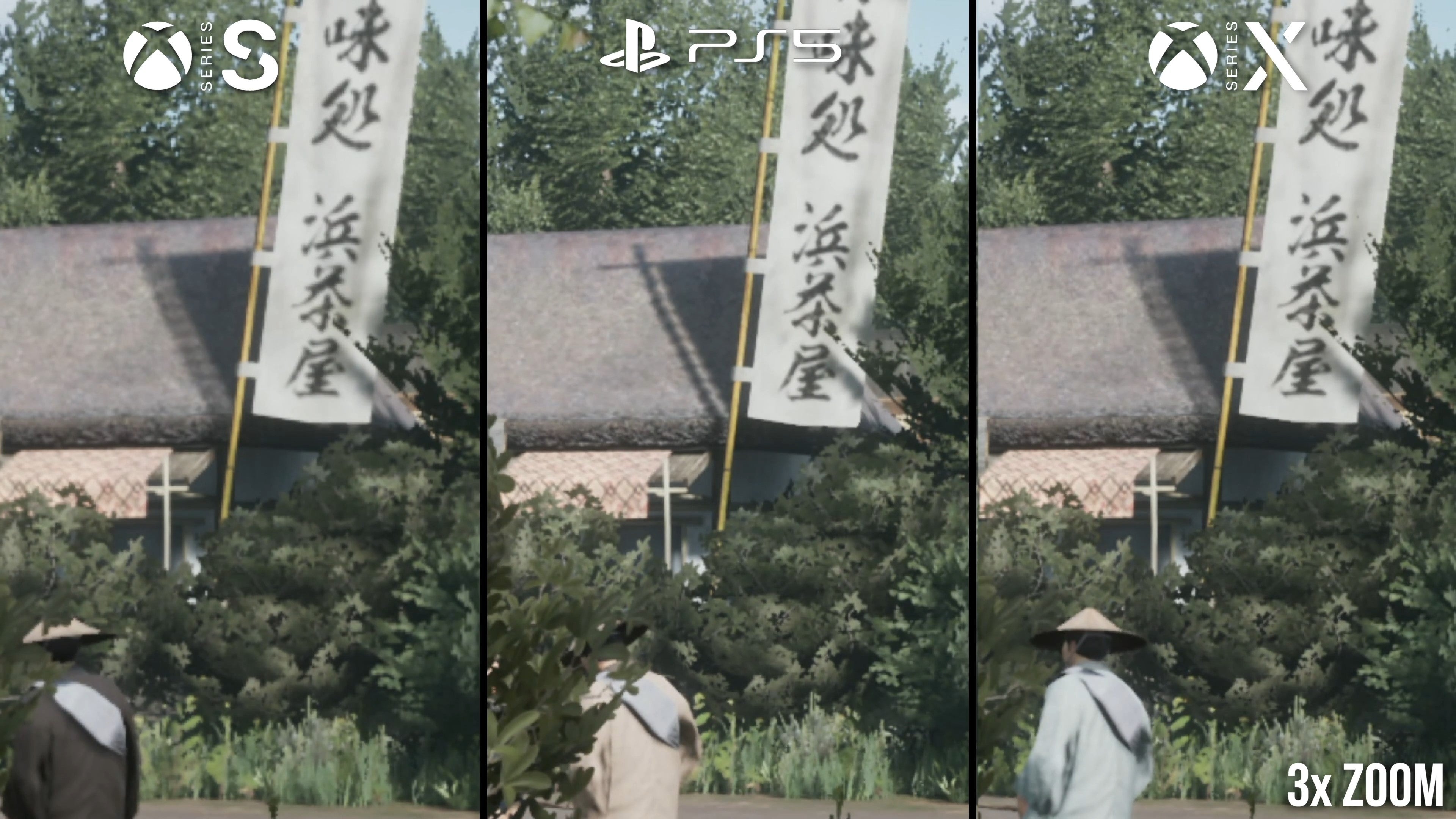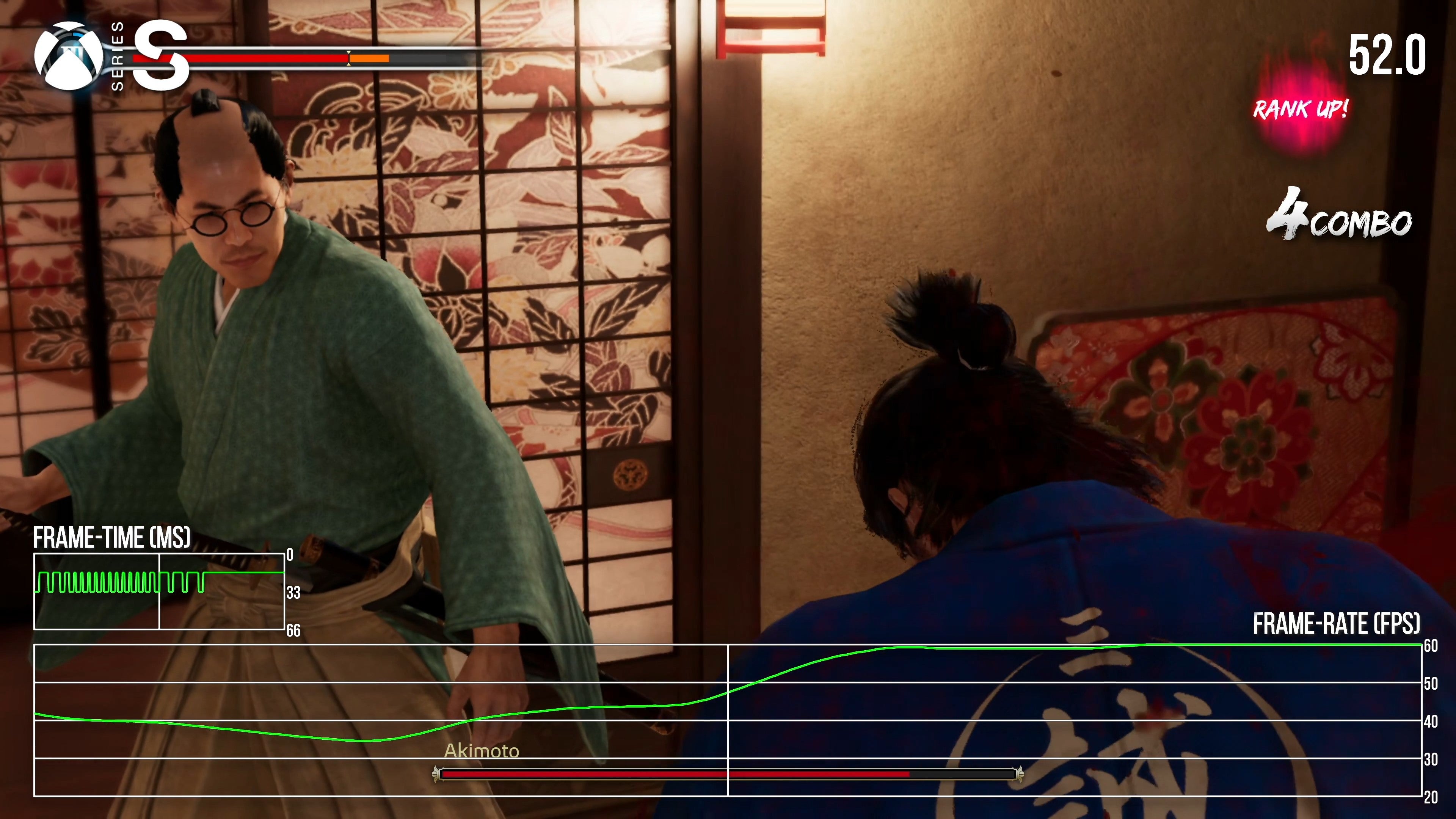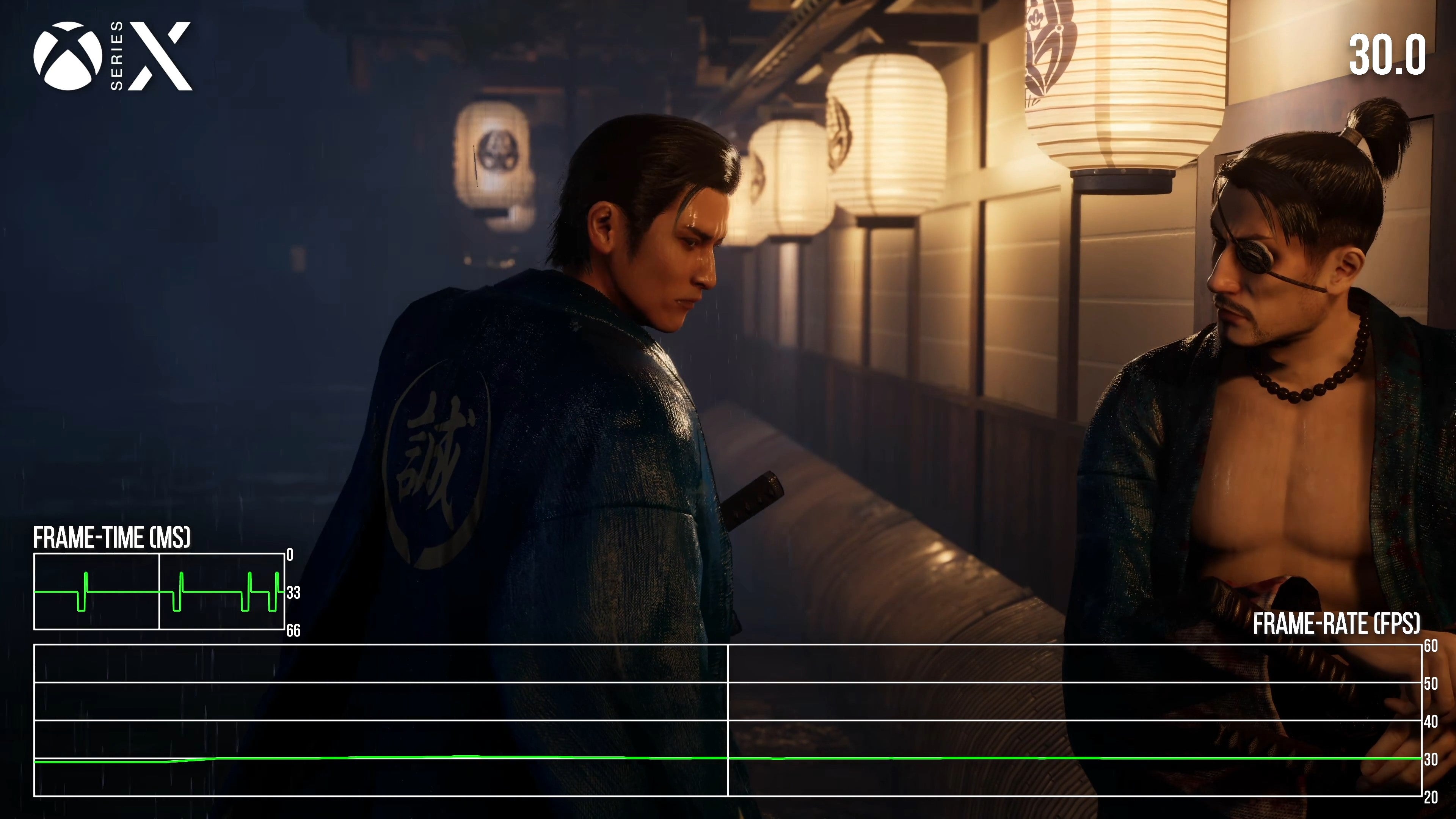Like A Dragon: Ishin is a game that requires a bit of explanation. The game itself is a side-story in the Like A Dragon franchise, which was up until recently known in the west as Yakuza. Its original release came all the way back in 2014, but the game’s heavy reliance on Edo-period Japanese history meant that its initial version was only released in the developer’s home country, on PS3 and PS4 no less. Some nine years later, the game has finally been localised for international audiences and dramatically updated with modern technology – in this case, Epic’s Unreal Engine 4. So the question is, does the game hold up on the latest consoles and PC – and what are the plus and minus points of jettisoning the developer’s bespoke Dragon Engine in favour of Epic’s ubiquitous middleware?
It’s very important to understand what Like A Dragon: Ishin is, and what it isn’t. This is a game that was originally developed around the PlayStation 3, with graphics and scope constrained around seventh-gen console hardware. It was also released on PS4, but that version was very similar to PS3, as you might expect. Obviously that wouldn’t hold up especially well at the moment, so the developers at Ryu Ga Gotoku Studios have taken a sort of hybrid approach to updating the game – lying somewhere between a remaster and a remake. The game logic and animation seem very similar, but the renderer has been swapped out for UE4 and assets have been modified or replaced to suit the new visual targets.
In side-by-side comparisons, the improvements are often vast. Lighting in particular looks totally different – the new version has very good looking baked lighting effects that provide more satisfying indirect shade. Light bounce is evident across a wide range of conditions, with an especially impressive appearance during daylight hours. It’s nothing too out of the ordinary for a modern title, but there’s a good level of detail, and it absolutely blows the original game out of the water. Character models have also seen a comprehensive upgrade. The overall designs are similar, but the modelling in many cases has been more or less completely redone. Hair appears to be strand-based, skin textures and lighting response seem much more realistic, and facial geometry has been refined.
Understandably, these improvements apply mostly to the main cast. Side characters also exhibit visual upgrades, though they appear more closely derived from the original work. And character assets vary a lot depending on the scene – in cutscenes they often look excellent, but gameplay models are substantially more primitive. Those cutscenes are a particularly strong visual standout in this new version. The dramatic, action-oriented direction of the original work really shines with higher-grade digital actors and modern lighting. All the UE4 niceties are on display here, including a creamy and smooth bokeh depth of field, and any of the game’s PS3-era visual faults are usually kept out of frame – or at least out of focus.
With that said it is important to keep expectations in check with this game, because there are a lot of visual holdovers from the original release, and they can be distracting. The most substantial fault comes down to environmental asset quality. Most of the game’s environmental geometry and base textures are essentially unchanged. Expect to see the same angular geometry across the gameworld, and the same basic 2D art plastered across most surfaces, sometimes at a higher resolution but otherwise identical to the original work. At a distance, it doesn’t stand out very much but at close range you don’t get the complex, geometry-rich modelling we’re used to seeing in modern games. Ishin often has the sort of stark, boxy look that older games often exhibit when rendered at high resolutions.
Lighting issues pop up from time to time as well, though these are mostly restricted to interior spaces. The UE4 conversion hasn’t done a whole lot for the lighting here, which tends to look very plain and dated. Character models don’t correspond at all to environmental lighting conditions either. I have to imagine there are technical constraints based on how the original game was built that restrict the kinds of improvements that are easily possible here. Animation is also a sore spot. Each combat animation looks fine in isolation, but in motion the results look stiff, with no real transitions between poses and actions. On a gamepad it feels reasonable enough, but the on-screen results often look comical, which is particularly noticeable when firing guns. The re-used animations in cutscenes fare better, though the facial movement lacks the fidelity necessary to work well with the upgraded character models.
Despite those sore spots, Like A Dragon: Ishin works pretty well overall in its new UE4-fuelled guise. Physically plausible lighting goes a long way towards making a game look modern, and that holds true even if its assets are relatively basic.
Compared to prior Yakuza, or Like A Dragon, outings, Ishin is a bit of a mixed bag. 2020’s Yakuza: Like A Dragon – and yes, this naming scheme is extremely confusing – ran on the proprietary Dragon Engine, an engine that was used for last-gen games in the series. Asset quality in recent Dragon Engine titles is mostly satisfactory and is a clear step above the generation-straddling Ishin. However, the lighting quality in those games was a bit of a mixed bag: at night, with plenty of individual light sources, the results were presentable enough, but daytime scenes with a reliance on indirect lighting tended to have very uniform colour.
There were definite visual high points – the cutscenes were very well-directed and featured detailed character models – but Ishin isn’t exactly a slouch there either. It’s not clear exactly where future series entries will land, with Ryu Ga Gotoku Studio developers openly musing about switching to Unreal, but I’d say Ishin is a vote of confidence towards an engine change – or at least a sign that the aging Dragon Engine needs a substantial overhaul.
Current-gen consoles showcase the expected differences in rendering resolution in Like A Dragon: Ishin, but there are some curious variations in visual settings as well. On the pixel count front, PS5 and Series X both come in at a straight 1440p resolution in their sole visual modes, without any signs of dynamic res. Series S clocks in at 1080p, again at a fixed pixel count. Head-to-head, the PS5 and Series X releases offer a small but perceptible increase in detail over the S, though all platforms look smooth and clean. There doesn’t appear to be any upsampling, so on a 4K set the final resolved images do look a bit soft, though at a typical television viewing distance they hold up well enough.

A quick side-by-side reveals some unexpected platform differences, however. The PS5 has a weaker ambient occlusion effect than the Xbox Series consoles, and has sharper shadowmaps as well. This looks more like a filtering difference to me, though it’s possible shadowmap resolution differs somewhat here. This will come down to personal preference, but personally, I prefer the more heavily filtered shadows on Xbox and I think the more extensive AO coverage looks somewhat better in most scenes. I can’t imagine this settings divergence is intended, so hopefully it can be fixed in a patch.
All current-gen machines target 60fps, though there are some caveats. Series X delivers a very solid 60fps update outside of a few select scenarios. Firstly, the game’s fully animated cutscene sequences play back at 30fps, and with uneven frame-pacing to boot. These do seem to drop the occasional frame but the primary issue is that uneven frame cadence, which gives them a slightly jerky appearance during certain moments. Dialogue scenes hit 60fps unlike the main cinematics, but the game does drop a couple of frames when the camera cuts for some reason. It’s not a big deal and it’s not too noticeable, but it does technically present as a decent-sized stutter on a frame-time graph.
Finally, I did notice the game can drop a frame or two during certain intense battle sequences, specifically during some of the quick-time-event cutaways. In general combat and exploration though, the game is a locked 60. PS5 is basically a perfect mirror of Series X. It offers 60fps in general gameplay, with unsteady 30fps cinematics and those dropped frames on camera angle changes during dialogue. Just like Series X, it’s a smooth experience on the whole. Series S lags somewhat behind the premium consoles. The same issues recur here, and we do get some small frame-rate dips in busy town areas as well from time-to-time. Certain dialogue moments and quick-time cutaways can also incur sustained frame-rate dips. Series S comes closer in graphical fidelity to the Series X and PS5 here than we usually see and the console seems to pay for it in demanding shots.

The PC version initially seemed to ship with profound #StutterStruggle issues but towards the end of my testing, a new patch was released that seems to address the problem – even though there’s no shader precompilation step. Annoyingly though, the game’s other performance hangups all make a reappearance from the console versions. The dropped frames on camera cuts return during dialogue sequences and the 30fps cutscenes are back as well. Even when targeting high frame-rates, these are still pegged at an unstable 30fps, which is pretty distracting.
On the plus side, Ishin does come packed with support for XeSS and FSR2.1. FSR2 in its Quality mode is often an upgrade over native 4K rendering, with a cleaner and less aliasing-prone rendition of fine geometric details. It does tend to suffer from some moire pattern artifacting on clothing at certain angles though, which can be distracting. The lower base-resolution FSR2 options have very similar image characteristics, though foliage does tend to become a bit artifact-ridden in the Performance and Ultra Performance modes. Disocclusion artifacting can be apparent as well, especially with those more aggressive upsampling options, though it’s not overly distracting I would say.
The PC version at 4K maximum settings compared to consoles does manage to produce a substantially more detailed image than the consoles can muster. It’s a reasonable upgrade, though the increase in clarity isn’t hugely impactful in general play. Outside of resolution and upsampling, the visual options are very basic, consisting of a few toggles and selections that don’t seem to offer any visual enhancements over consoles, with basic selections for reflections, textures, SSAO, shadows, and geometric quality.

PC at maximum settings is actually a bit of a hybrid between PS5 and Xbox Series – the ambient occlusion is more restrained, just like PS5, while shadowmaps have the more soft-filtered resolve that is characteristic of the Xbox versions. I suspect that most decent machines should be perfectly capable of hitting those maximum settings at good resolutions, judging from how little my RTX 4090 is taxed here.
It’s been a while since I played much of a Yakuza, or Like A Dragon, game, but I enjoyed my time with Ishin. This is a very story-centric and cutscene-centric brawler, with all the flair and humour the series is known for. Combat has a bit of a PS2-style character to it, with simple mechanics and clearly telegraphed enemy moves, but it’s responsive and satisfying. I don’t think anyone will mistake Ishin for the latest big-budget behemoth – even with its visual upgrades – but I found the mix of action, narrative, and amusing diversions to be perfectly compelling on its own terms.
The overall approach taken to the visuals is similar to a handful of UE4-driven game updates we’ve seen in recent times. Crisis Core: Reunion in particular comes to mind, and just like that game, Ishin looks reasonably good while still reusing a lot of the original work. Improvements to lighting and key assets go a long way towards making the game look and feel like a modern title, even if on close inspection its PS3 roots are obvious. Performance is mostly good as well, though the cutscene issues do annoy. Like A Dragon: Ishin offers compelling visual upgrades over its initial outing, and the game holds up well. For fans of the series, it’s an easy recommendation.
Be the first to comment